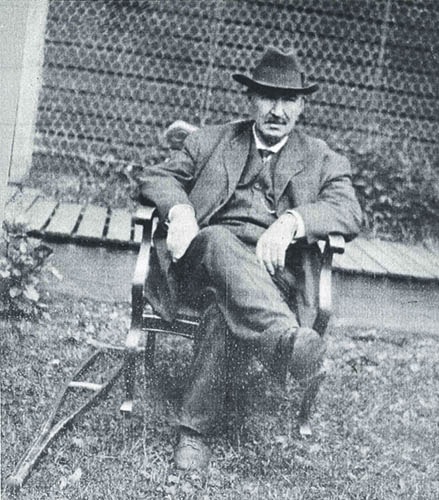Driving to Pitt Lake, you will travel much of the distance on “Rannie” Road.
But if you made this trip in the years before 1997, you would have driven along “Rennie” Road, and we owe the name change to Mary Jo Pearson, who battled city hall for six years to ensure her great uncle was remembered accurately in the community.
On 1914/1915 maps in our collection, the road was clearly spelled “Rannie,” and this continued to be the case through 1964, when the Pitt Meadows Ratepayers annotated an earlier map and noted “Rannie” Rd.
However, by the late 1970s, the name was appearing on maps as “Rennie,” and this also appears to be the case with street signs.
Was this simply a typo that took hold?
William ‘Skookum’ or ‘Big Bill’ Rannie was a larger than life entrepreneur.
Born in Campbellford, Ont. around 1863, Rannie worked his way west with the CPR, settling on the coast in 1887, when he eventually established the contracting firm of Campbell, Rannie and Ironside and participated in some of the largest construction projects in the area in the early 20th Century, including participation in the construction of the Coquitlam to Buntzen Lake tunnel and the B.C. Electric’s New Westminster to Chilliwack line.
During the Yukon gold rush, ‘Captain’ Rannie and his firm operated the sternwheeler Casca, transporting supplies and miners between Whitehorse and Dawson City.
The year 1909 brought a new venture for Rannie as he formed the Pitt Meadows Land Company in order to purchase and reclaim 1,679 acres of land in Diking District 1, north of the Lillooet River. The land had returned to the Dominion Government after the B.C.D.D. Company had been unable to reclaim it and Rannie felt he could succeed where it had failed, if he could get the land for a good price.
He secured it for $1.50 an acre, so long as he managed to reclaim it and have it operating by May 1913.
Upon completion, his plan was to sell plots for as much as $200 an acre.
By the few accounts we have, we know Rannie took the venture of reclaiming the land to heart.
In an article in The World newspaper in 1915, he was promoting that more than $200,000 in improvements had been made and his project was essentially finished, with: 12.5 miles of 10-foot high dikes; an electrified pumping plant with 25,000 gallons per minute capacity; flood gates; 70 miles of drainage ditches; and good roads completed.
Rannie’s Ranch at the crossing of Sturgeon Slough had many buildings, including a massive barn, hay storage, chicken coups and a blacksmith’s shop.
But, as with earlier attempts, it was all for naught as the dikes eventually gave way and the pumping station proved inadequate.
By the end of the Second World War, Rannie’s company was defunct and his holdings returned to the Crown.
William Rannie died on June 20, 1927, and his body was interred at Mountain View Cemetery in Vancouver.
Seventy years later, in the summer of 1997, Ms. Pearson won her battle and the City of Pitt Meadows changed signage so the road would once again be known as “Rannie.”
Leslie Norman is curator at Pitt Meadows Museum.
